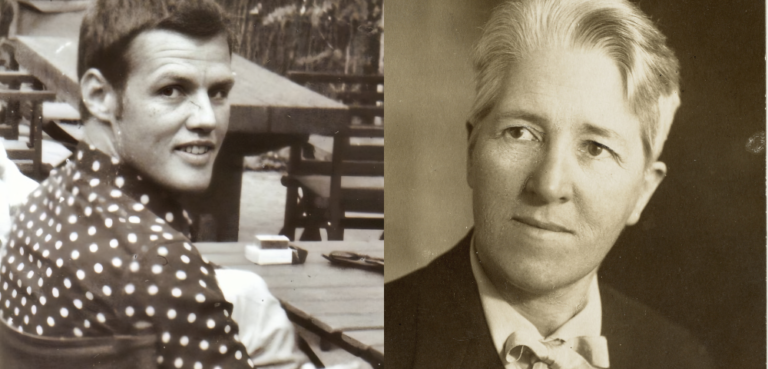Opinion by OSMOND CHIU
Local councils get a bad rap, but what they do matters. More than just roads, rates and rubbish, they shape our community’s look and feel, from our common and green spaces to what is encouraged whether it be music precincts or revitalized high streets. They take leading roles in fighting racism and action on climate change and crucially provide essential services like early childhood education, swimming pools and libraries. What they do matters because it shapes our everyday quality of life. COVID-19 has only reinforced its importance.
I care about what our Council does because I have a strong attachment to where I live and want it to thrive. I do not, however, have an attachment to arbitrary local government boundaries.
I suspect many others share my view as one thing I have never heard anyone mention when they talk about our community is splitting up the Inner West Council. Despite this, de-amalgamation is being pushed by some as the defining issue of September’s upcoming local government election.
Symbolism of de-amalgamation
Rather than simply and clearly explaining how Inner West residents will be better off, the non-binding de-amalgamation poll has become a confusing and abstract debate about a process, supported by a strange alliance of disparate and ideologically contradictory groups.
Advocates have tapped into anger about rate rises in the old Marrickville Council due to harmonisation, frustrations about services, a reactionary concern about public debt and deficits, a desire for more councillors, a dislike of party politics and resentment over forced mergers. Anger has been combined with claims the State Government will cover all costs associated with de-amalgamation and implied rate rises may be reversed.
When it comes to de-amalgamation, the adage that if something seems too good to be true, it probably is, seems to apply.
Firstly, it must be made clear the de-amalgamation poll is purely symbolic. The Local Government Act clearly indicates any de-amalgamation decision will ultimately be determined by the Local Government Minister, not by the poll.
Secondly, the actual costs and possible impacts of de-amalgamation need to be explained. Instead, de-amalgamation is being painted as having no costs and only benefits, a free lunch someone else will pay for. It insults the intelligence of residents of the Inner West to make this claim.
Deamalgamation is not a cost-free exercise. Undoing contracts, separating ICT systems, and restructuring the workforce has a cost and impact on services. An independent cost-benefit will be released in August but initial estimates from Council staff have costed it at between $20m and $34m in the first year with ongoing costs of between $11m and $15m per annum. That’s an extra $429 for every ratepayer in the first year, on top of existing rates, and an extra $189 per year thereafter.
The most optimistic assessment would be a one-off grant from the NSW Government to cover costs rather than ongoing support for long-term costs of demerging that will probably exceed estimates. Given Inner West Council was already shortchanged $24 million during the amalgamation process, it seems all but certain residents would foot much of the bill.
Understanding a reversion
What should guide our decisions are whether we will be better off as a community. Frustrations about services are understandable but it is unclear how de-amalgamation would make things better. There is no doubt cost-shifting to councils by the State Government, rate capping and a growing population have increased pressures and affected services. It also makes it implausible that deamalgamating would result in rate decreases and better services. An independent report commissioned by Cootamundra Gundagai Regional Council, who are pushing for a demerger, indicates increases to rates would still be likely as well as “strict cost control” even after de-amalgamation.
As someone who lived in the Inner West before and after the merger, I would frankly struggle to explain how a reversion would make our everyday lives better. The attempt to paint a picture of an idealised past for these former councils reminds me of diaspora communities romanticising long-departed homelands. Claims about the state of political divisions and party politics on Inner West Council seem absurd given the former Marrickville and Leichhardt Councils were both notorious for politicking, with books written and documentaries made about it. The fact a satirical Balmain Secessionist Movement ticket got elected to Leichhardt Council in living memory indicates many residents were far from satisfied.
This is not to say our local democracy is perfect. More can be done to improve it. While the number of councillors is capped at fifteen, we should consider other ideas like community boards and trialling citizens’ juries. We need to, however, ensure underrepresented groups that often are not heard like young people, those from culturally diverse backgrounds and renters get a much larger say rather than simply providing another megaphone to those with existing platforms.
Ultimately, this comes down to our priorities and whether we want to look to the future or the past. There is nothing wrong with advocating for de-amalgamation and wanting a vote as a symbolic protest, I get the appeal, but for me, and I suspect many others, it is a distraction from a vision and a plan for a better, fairer, and more vibrant future for the Inner West.
Osmond Chiu is a Research Fellow at the Per Capita think tank. He is also a member of the Inner West Council’s Multicultural Advisory Committee.


